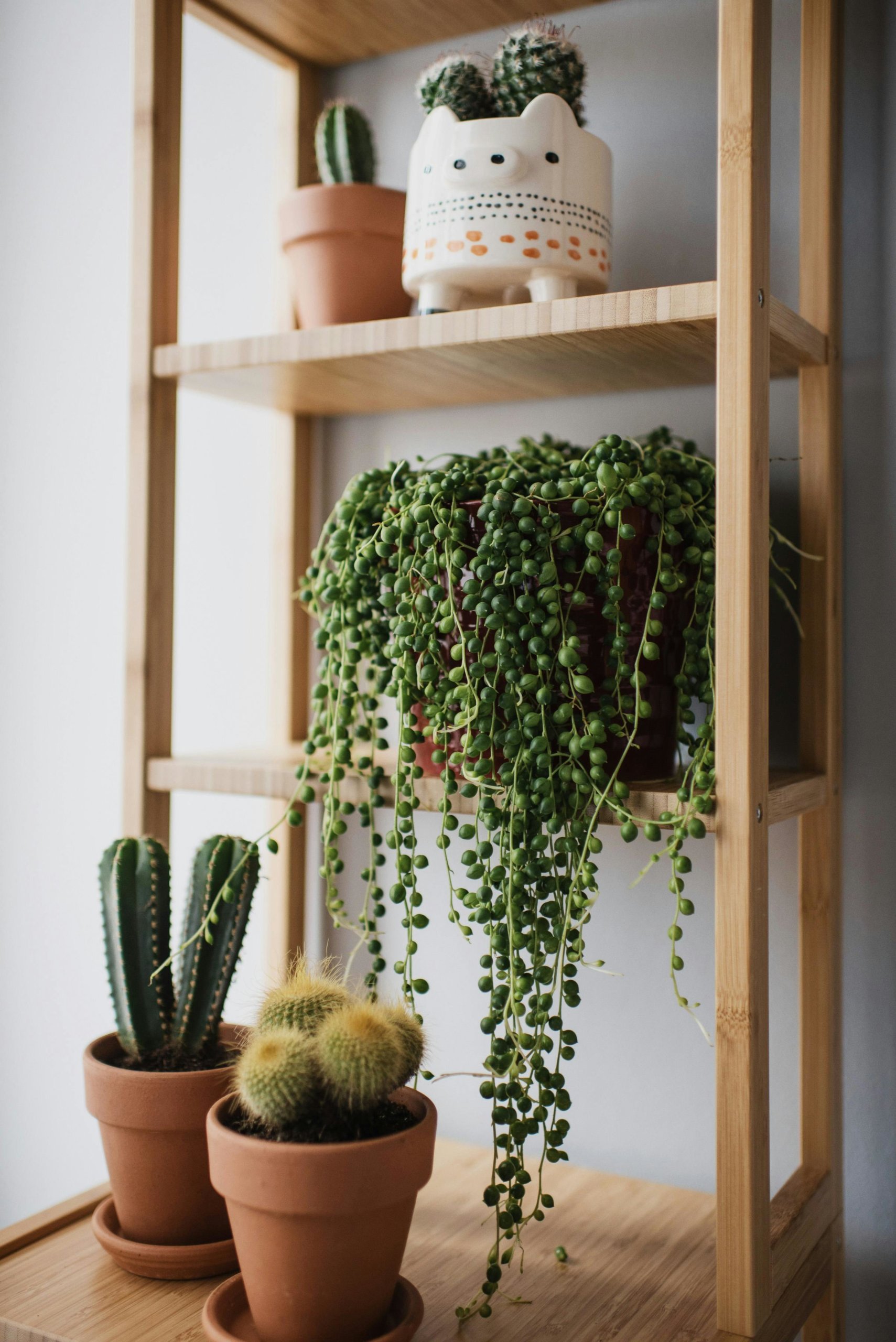Rare Trailing Succulents
If you want to make your plant collection stand out, trailing succulents are a great choice, especially the rare ones. Rare trailing succulents have unique shapes, colors, and growth patterns that set them apart from the more common varieties. When you hang them in a basket or let them spill over a shelf, they become a living decoration that grabs attention.
Finding these rare plants can be exciting. Some have silvery leaves, others grow in long trailing chains, and a few produce unusual flowers. You do not need to be an expert gardener to enjoy their beauty, but it’s helpful to know about their care needs and how to help them thrive.
Key Takeaways
- Rare trailing succulents add unique beauty to any collection.
- Understanding their needs helps them thrive in your space.
- Displaying and propagating them can be simple and rewarding.
Understanding Rare Trailing Succulents
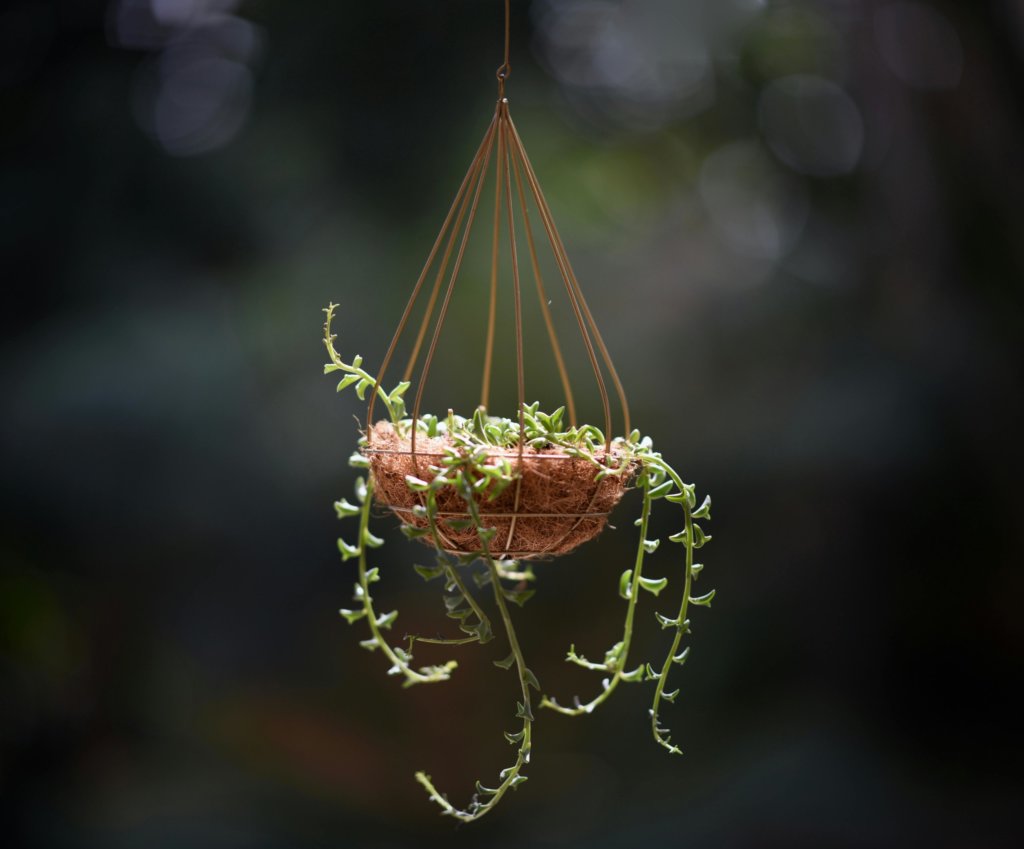
Rare trailing succulents stand out for their unique looks and growth patterns. They can add beauty to your home and are great choices for both new and experienced plant owners.
What Makes a Succulent Rare
A succulent is often called rare because it is hard to find in stores or in the wild. Some may come from remote regions or have a slow growth rate. Others have unusual colors, shapes, or patterns that set them apart from common succulents.
For example, succulents like String of Pearls (Senecio rowleyanus) and Trailing Jade have unique bead-like leaves or stems. Limited availability and special care needs can also make certain types rare. Many collectors look for succulents with striking leaf arrangements, variegations, or unusual blooms.
You may notice that rare succulents sometimes cost more because they are in high demand but fewer are grown. Some species are also protected or regulated, which limits their sale.
Defining Trailing Growth Habits
Trailing succulents have stems that spill or drape over the sides of pots and hanging baskets. Their stems can grow long and hang down, making them very decorative for shelves and planters.
Common examples include String of Hearts and classic Trailing Jade (Kleinia petraea). These plants often have small, plump leaves lined up along thin, flexible stems. This makes them ideal for creating cascading effects.
Trailing species grow horizontally or downwards, rather than upright. This growth habit helps them compete for light in their natural environments and makes them well-suited for small spaces indoors. In hanging pots, they can cover large areas and add a lush touch to a room.
Benefits of Growing Unique Trailing Succulents
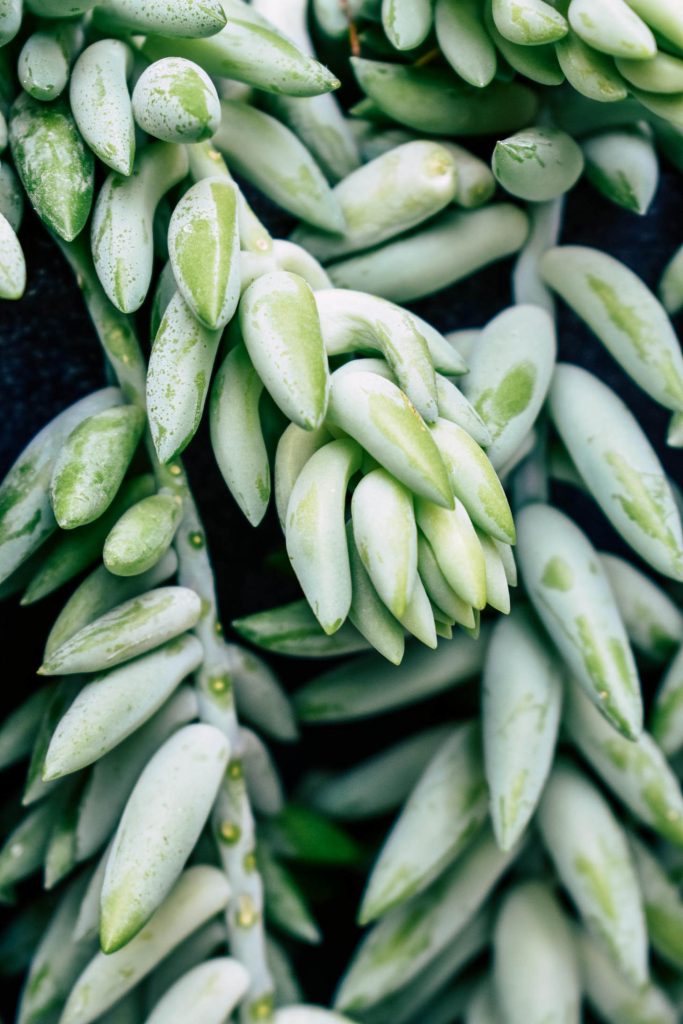
Rare trailing succulents can change the look of your living space. Their unusual forms, colors, and textures stand out in collections and arrangements. They are especially good if you want plants that don’t look like the usual houseplants.
You might enjoy that these plants use little space since they grow down instead of up. Trailing succulents often need less water than many other plants, thanks to their ability to store water in their leaves.
Other benefits include easy care in many cases, and the ability to create hanging gardens or accent pots. If you enjoy collecting, these rare types offer a way to build a unique collection that reflects your personal style.
Top Rare Trailing Succulents for Your Collection
Some trailing succulents stand out for their unique forms and striking growth patterns. These plants can elevate your collection, offering both visual interest and rare beauty.
Monkey’s Tail (cleistocactus colademononis)
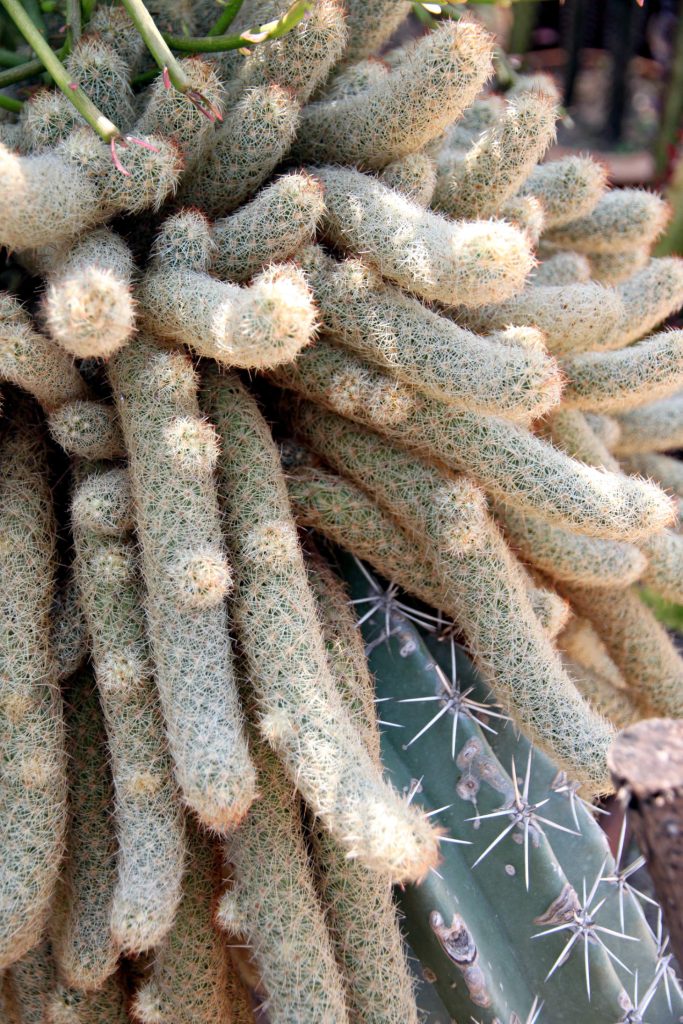
The Monkey’s Tail, also called Cleistocactus colademononis and formerly known as Hildewintera colademononis, is a cactus that produces long, tail-like stems covered in soft white hairs. As the stems grow, they can reach up to 8 feet (2.4 meters) and cascade elegantly from hanging baskets.
This succulent blooms bright red flowers that usually appear in spring or early summer. The blooms contrast beautifully with the fuzzy, trailing stems. You should give it bright, indirect sunlight and water only when the soil is dry.
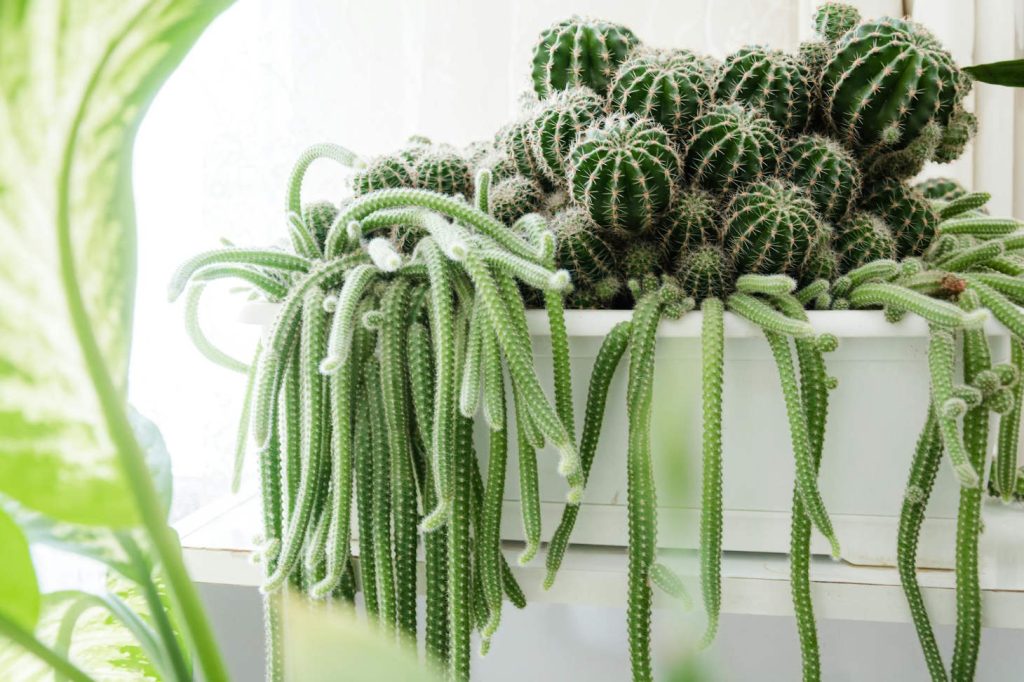
Monkey’s Tail prefers well-draining soil. Protect it from freezing temperatures. This rare cactus attracts attention with its texture and dramatic trailing habit. It is sometimes confused with the Rat Tail Cactus (Aporocactus flagelliformis), but its larger stems and softer spines set it apart.
String of Pearls (Senecio rowleyanus)
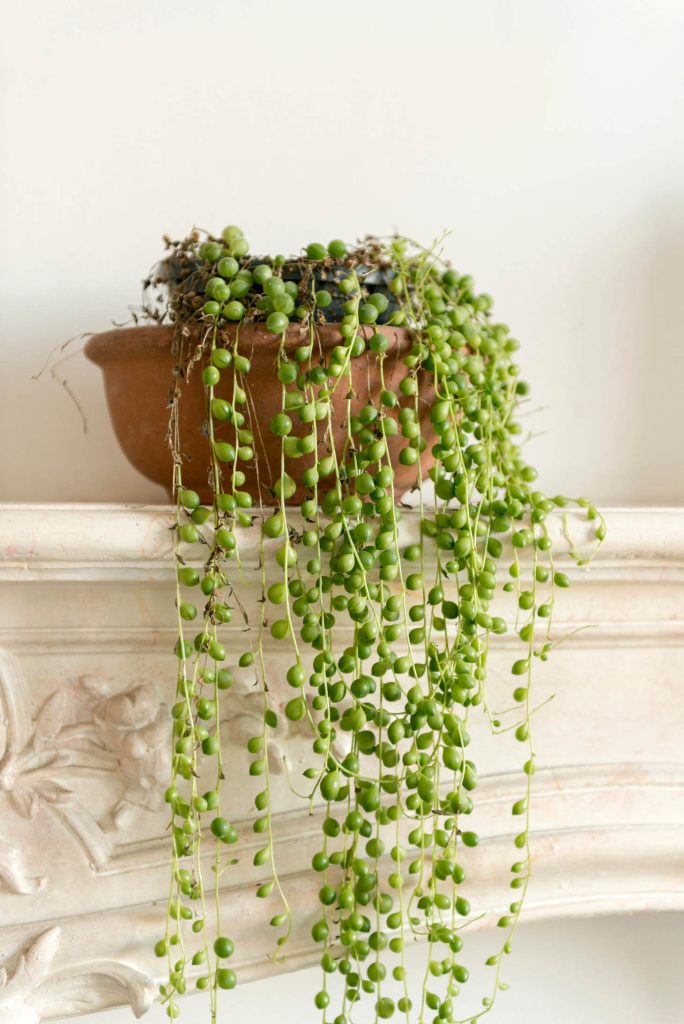
String of Pearls (Senecio rowleyanus) is a popular yet hard-to-find trailing succulent. Its stems are lined with round, bead-like leaves that really look like a string of green pearls. This unique pattern makes it a favorite for hanging containers.
Place your String of Pearls in a spot with bright, filtered light. Overwatering is a common mistake. Wait until the soil is mostly dry before watering again. The plant can bloom with tiny white flowers that smell slightly like cinnamon.
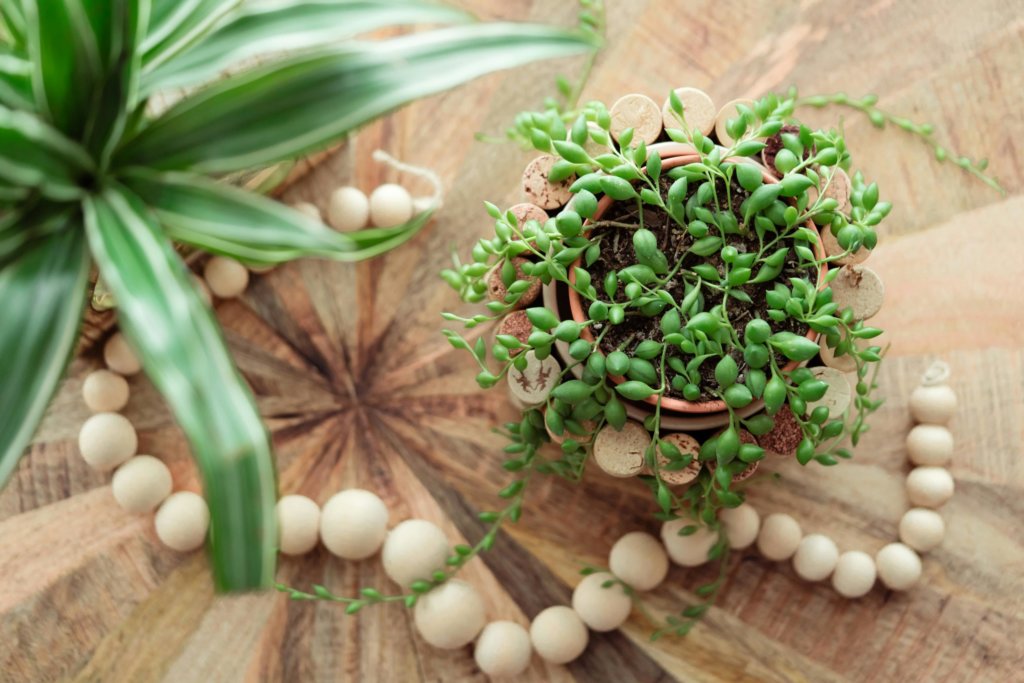
Its small size and trailing nature let you use it in tight spaces or as an accent for shelves. If you want other similar plants, String of Tears (Senecio herreianus) and String of Bananas (Curio radicans, formerly known as Senecio radicans) are close relatives.
String of Hearts (Ceropegia woodii)
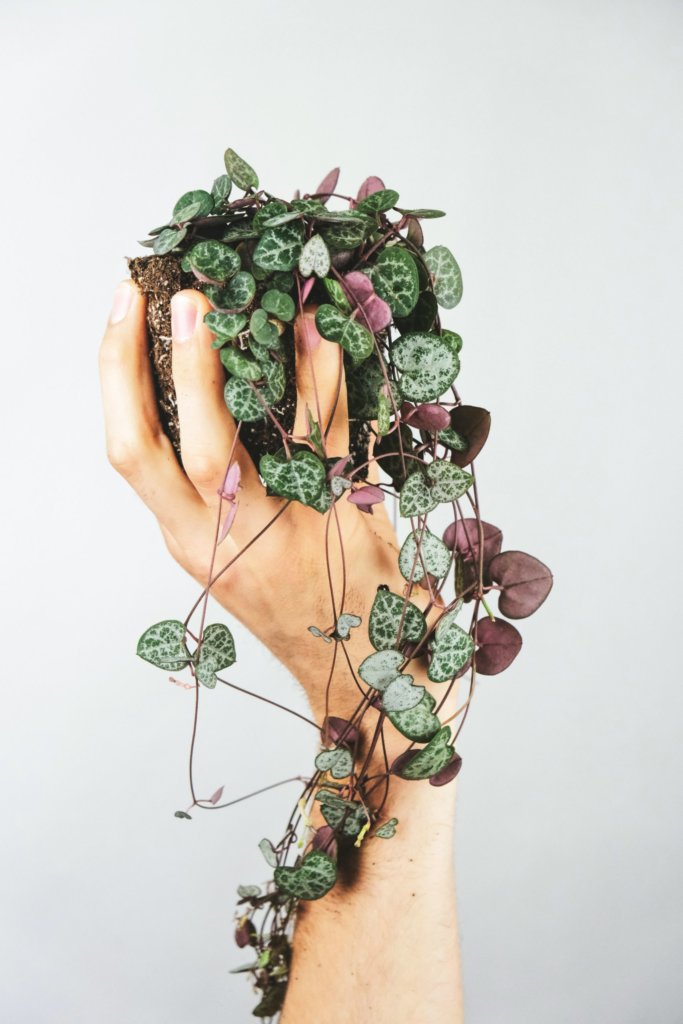
String of Hearts (Ceropegia woodii) is a delicate, trailing plant with heart-shaped leaves and thin, wiry stems. The leaves are green with silver markings on top and purple tones underneath. This plant can trail up to 12 feet, creating a curtain of small hearts.
Give String of Hearts bright, indirect light and allow the soil to dry between waterings. This succulent can develop small, tuberous roots and will flower with unusual, lantern-shaped pink blooms.
You can grow it in hanging planters or let the vines drape from shelves. String of Hearts is less common than other trailing succulents like Calico Kitten (Crassula pellucida) or Trailing Jade, offering a distinct appearance and growth habit to your collection.
Ruby Necklace (Othonna capensis)
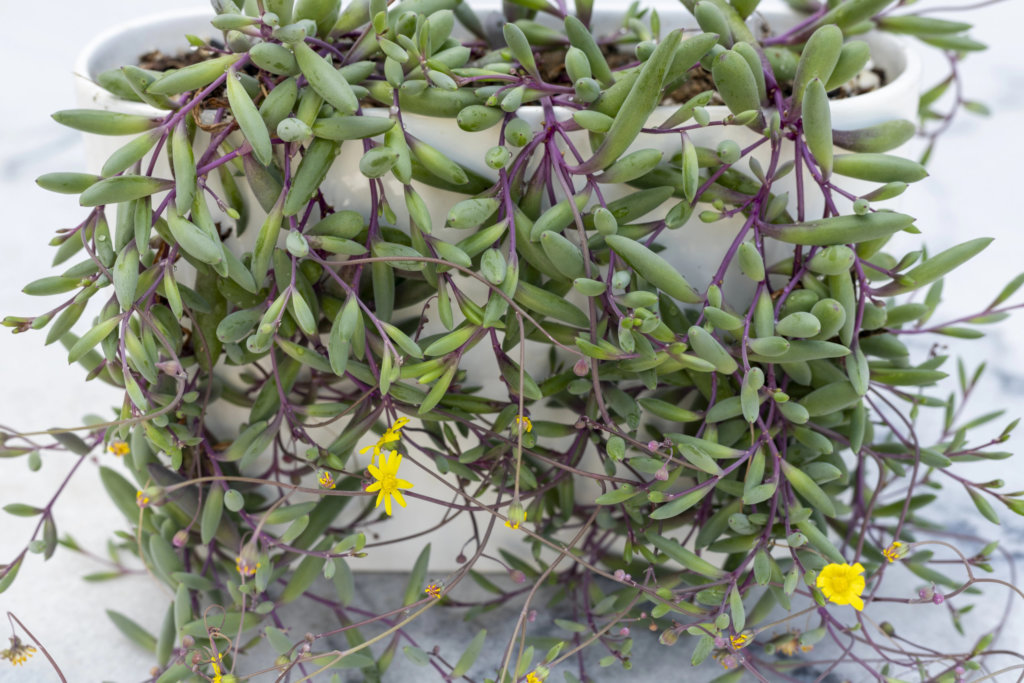
Ruby Necklace (Othonna capensis), sometimes called String of Rubies, features narrow, bean-shaped leaves in bright green, ruby purple, or deep red tones. These colors become more vivid when the plant is exposed to a lot of sunlight.
This succulent produces yellow, daisy-like flowers, mostly in the warmer months. The stems are thin and can trail several feet over the edge of pots, creating a vibrant, flowing effect. Othonna capensis is drought-tolerant and thrives in well-draining soil.
Give it a sunny window or outdoor spot where it will receive a few hours of direct sun daily. Avoid overwatering, this plant prefers drying out between waterings. The eye-catching color and fast-growing habit make Ruby Necklace a choice pick if you want something different from more common varieties like Burro’s Tail (Sedum morganianum) or Donkey’s Tail.
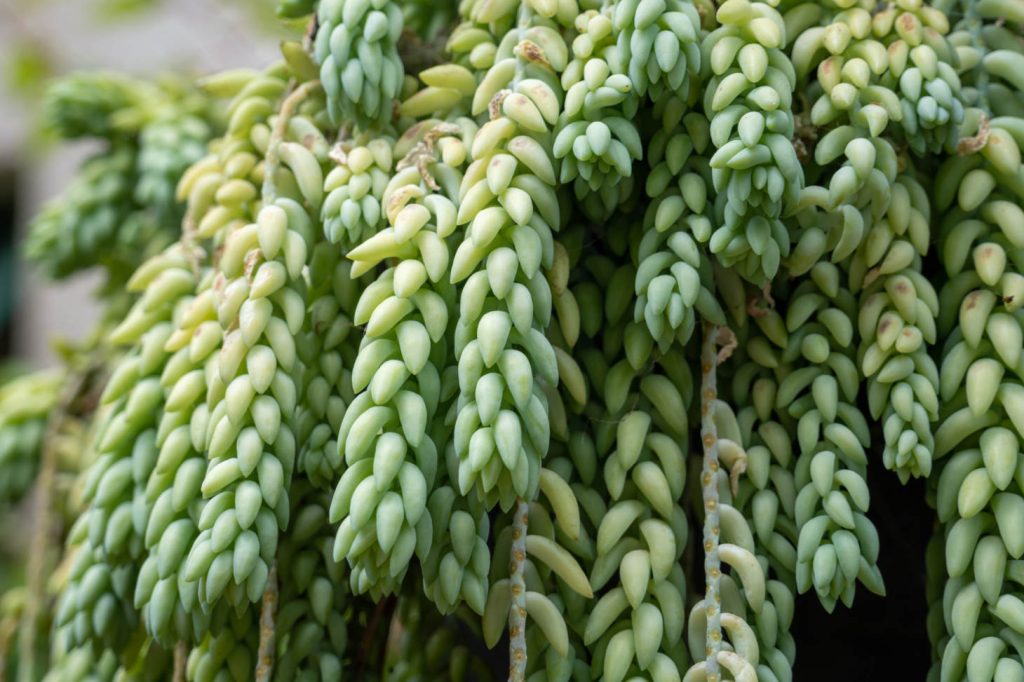
Care Essentials for Rare Trailing Succulents
Paying careful attention to the basic needs of rare trailing succulents helps prevent common problems like root rot, leggy stems, and pest infestations. Strong care habits also help these plants grow well and keep their unique, attractive shapes.
Soil and Planter Selection

Rare trailing succulents need well-draining soil. A well-draining mix made for succulents is best. These mixes usually contain perlite, coarse sand, or small gravel. This prevents roots from sitting in water, which can cause rot.
Choose a planter with drainage holes at the bottom. Hanging baskets work well for trailing varieties since they let the stems spill over and get plenty of airflow. Avoid deep pots; shallow planters keep the soil from staying too wet. Terracotta planters are a good choice because they let water evaporate fast.
If your area is humid or gets a lot of rain, pick a spot where water doesn’t collect around the pots. Always check that the soil dries out between watering.
Light, Watering, and Humidity Requirements
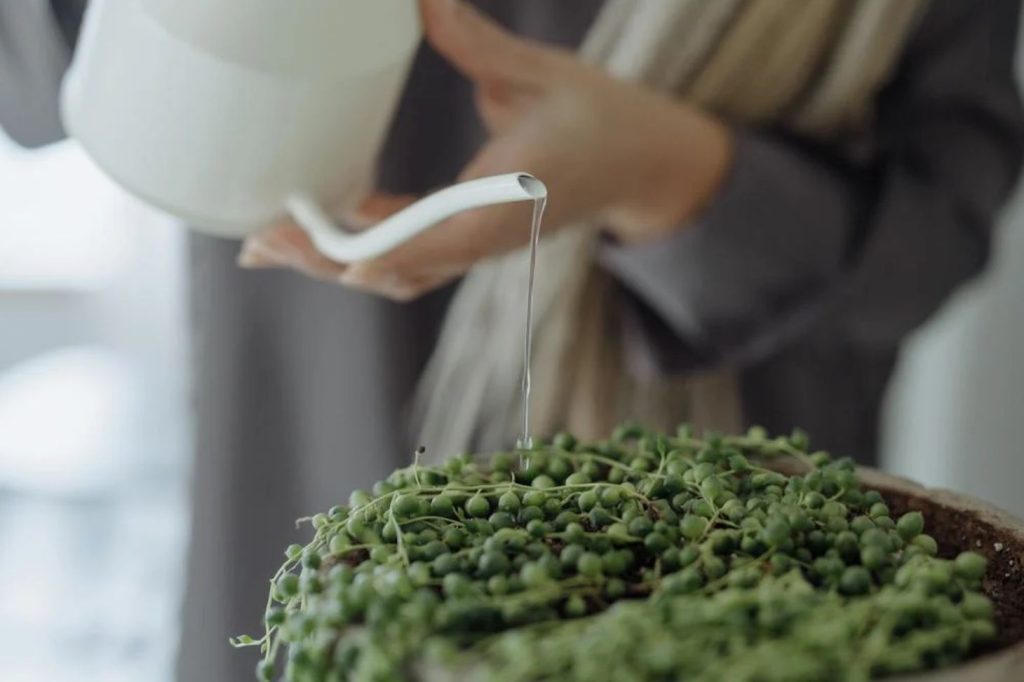
Most rare trailing succulents do best in bright, indirect light, not direct sun. Too much sun can scorch the leaves, while not enough light makes stems long and thin. Place them near a window with filtered light or use a sheer curtain.
Water only when the soil is completely dry. In general, water less often in the winter or if the weather is cool. Overwatering almost always causes more harm than underwatering. Check soil moisture with your finger or a moisture meter before watering.
Humidity should stay on the low to medium side. These succulents are adapted to drier conditions and do not need misting. In very humid zones, keep your plants somewhere with good airflow. Many rare trailing types can grow outdoors in USDA Hardiness Zones 9–11, but watch out for extra rain or cold.
Fertilizing and Pruning Best Practices
Rare trailing succulents don’t need much fertilizer. Feed them once a month during the growing season (spring and summer) with a diluted succulent or cactus fertilizer (quarter to half strength). Do not fertilize in the dormant season.
Prune your trailing succulents by pinching or cutting back leggy stems. This helps them branch out and keeps their shape neat. Remove any dried, damaged, or yellowing leaves using clean scissors or your fingers.
You can use the healthy cuttings for propagation. Propagation also encourages bushier growth and can be a way to increase your collection. Always use clean tools to prevent spread of disease.
Pest and Disease Prevention

Pests such as mealybugs, spider mites, and aphids sometimes attack rare trailing succulents. Inspect your plants regularly for sticky residue, webbing, or small bugs on leaves and stems.
Quarantine new plants for a few weeks before mixing with your collection. Use a gentle insecticidal soap or rubbing alcohol on small infestations.
To avoid disease, never let water stand on the leaves, especially in humidity. Ensure proper drainage and don’t crowd the plants together. Always remove dead debris from around the planter to prevent mold and rot. With the right care, your succulents should stay healthy and pest-free.
Collecting, Displaying, and Propagating Rare Trailing Succulents
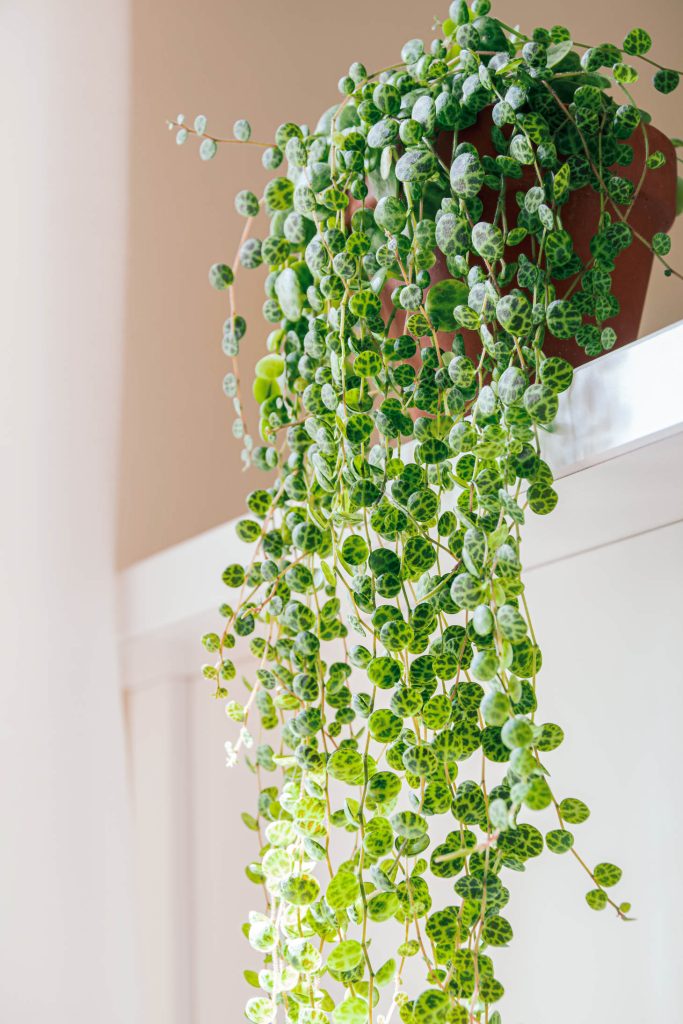
Rare trailing succulents add beauty and interest to both home and garden spaces. Learning where to find them, creative ways to show them off, and how to propagate these unique succulents makes your collection thrive and grow over time.
How to Source Rare Varieties
To find rare trailing succulents, search for specialty plant nurseries either locally or online. Many collectors also trade with others in plant groups or at garden clubs. Attending plant shows and botanic garden sales often gives you access to unusual species not sold in garden centers.
Look for reputable sellers that clearly label and care for their succulents. Avoid buying from sources that cannot provide information about the plant’s origin. Rare varieties like String of Hearts (Ceropegia woodii) or String of Pearls (Senecio rowleyanus) are often available from collectors or sites focused on unique succulents and cacti.
When shopping online, review photos and ask questions to make sure the plant is healthy. Many rare succulents are slow growers and limited in supply, so patience is important when building your collection.
Creative Display Ideas
Trailing succulents are ideal for hanging baskets, wall planters, or elevated pots where their long stems can drape down. You can use macrame hangers or metal frames to create height and interest.
Try grouping different species together for variety in color and shape. For example, combining String of Bananas, Fishhooks Senecio, and Donkey’s Tail (Sedum morganianum) gives texture and diversity. Hanging baskets near bright windows or patios allow your collection to thrive while acting as living decor.
Using shallow boxes or open terrariums can help you display multiple succulents together in small spaces. Add pebbles or decorative stones on top of the soil for a neat look and to aid drainage.
Propagation Techniques for Trailing Succulents
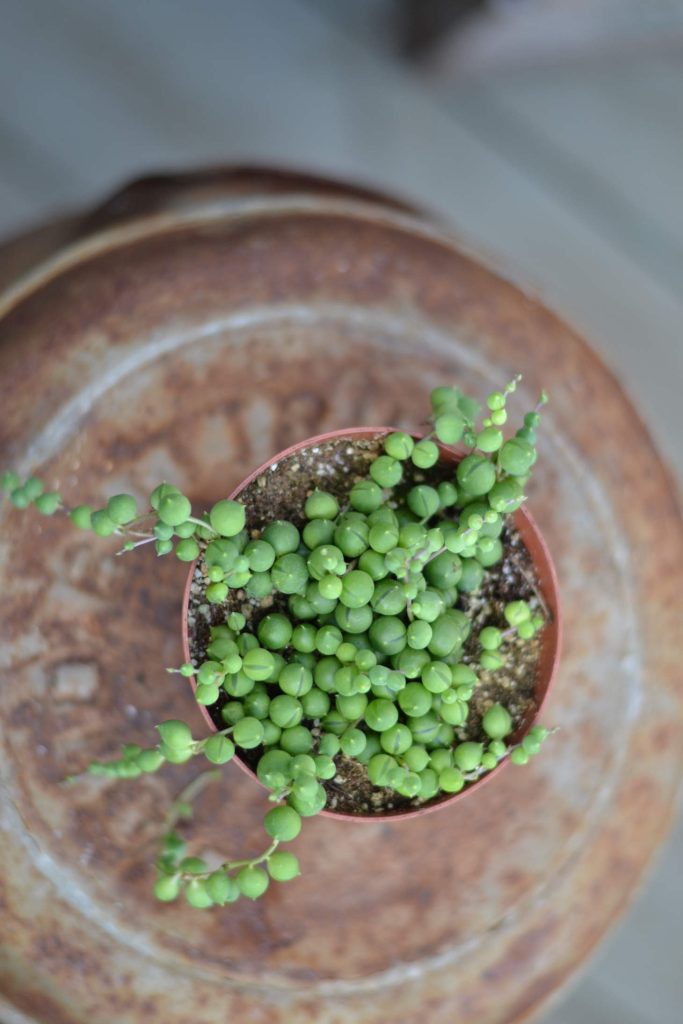
Most trailing succulents are easy to propagate by taking stem cuttings. Use clean scissors to snip a healthy stem, remove a few lower leaves, and let the cut end callus (dry out) for a day or two to prevent rot.
Once dry, place the cutting’s end into well-draining soil. Keep the soil slightly moist but not soggy. In two to four weeks, roots usually begin to form. Some types, like String of Pearls, also root well in water. Place the cut end in a glass with just the tip submerged.
When new roots are visible, transfer the cutting to a planter or hanging basket filled with cactus or succulent mix. Propagating allows you to expand your collection or share plants with friends.
Propagation Quick Tips:
- Always use clean tools
- Let cut ends callous
- Use well-draining soil
- Start cuttings in bright, indirect light

